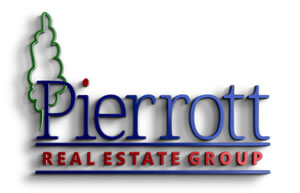Taking on a home improvement project can increase your property’s value, address small issues before they become large problems, and make your house more livable. But while small projects may require only sweat equity (e.g., grabbing a hammer and scheduling out a few hours of your time), big changes typically require big bucks. Something like a kitchen remodel—a common yet costly project—costs around $23,000, according to Home Advisor.
Fortunately, you don’t have to be flush with cash to finance a big home improvement project. There are resources you can tap to help you pay for a renovation without having to drain your bank account.
Below, the financial services that might be worth exploring if you’re ready to make some changes to your home.
If you’ve lived in your home for at least three to four years, you’ve probably built up some equity.
“We like to call this ‘lazy equity’—money that is not being used that is tied to the home,” says Jordan Terrell, associate broker at Atlas Real Estate, a Denver-based realty group specializing in real estate investments, brokerage, and property management.
One way to use that equity is to get a home equity line of credit, or HELOC. This credit option allows homeowners to use their equity as collateral to borrow funds to use to improve the property.
“You can create an interest-only loan, which works a lot like a credit card or checking account, and you pay interest until it’s paid off,” Terrell says.
However, there are disadvantages to this option.
“Once the funds are in use, the homeowner will have to start paying interest on the funds used until the balance is back at zero,” Terrell says.
Ruth Shin, CEO and founder of PropertyNest, a real estate startup in New York, says HELOCs are better suited for longer-term projects, or a series of projects that are projected to take at least a year to complete. Why? Because you can borrow funds as needed (as opposed to taking out a lump sum), interest rates are variable (so you can tap the funds when it makes the most financial sense), and repayment options are flexible.
2. Personal loan
Suppose you don’t have a lot of equity in your home—or you don’t want to touch the equity you do have. A personal loan is another way to finance your home improvement project.
This is a viable option if you’re in a hurry and don’t need to borrow a lot of money, according to Abe Kahan, head of mortgage at Laurel Road, a digital lending company.
For some personal loan lenders, the minimum amount can be as little as a few thousand dollars. And Kahan says personal loans come with few to no fees.
But there are also some disadvantages to getting a personal loan.
“Interest rates tend to be higher, because lenders aren’t relying on assets such as a home to back the loan,” Kahan explains. In addition, the repayment periods are shorter—usually between three and seven years.
3. Credit cards
Depending on the amount of your project, you may want to put it on your credit card.
Jody Costello, home renovation planning expert and founder of the website Contractors From Hell, says she’s seeing this more and more.
“People are choosing cards where they can earn points and use them for things like future travel,” she says.
One obvious disadvantage to this option is high interest rates.
But some credit card companies do offer 0% APR for certain periods of time, allowing consumers to pay off their balance before the interest kicks in, Costello explains. However, if you don’t pay it off during this time frame, you’ll probably end up with a double-digit interest rate.
4. Short-term rental
This option doesn’t require equity or cash, just a little extra space in your home and a willingness to be a property manager. To generate some cash, consider renting out your house or a spare living space (e.g., the basement or an in-law unit) as a short-term rental on Airbnb or VRBO.
“Many of the homeowners I’ve seen do this can generate around $600 to $1,200 per month, depending on the location,” says Terrell.
It’s a relatively quick way to come into a chunk of cash that you can use for a renovation. However, you’ll be responsible for making the property livable and managing guests, which can be a tall order.
Most short-term rental sites have hosting standards that you must meet, which include making sure you’ve provided essential items (e.g., toilet paper, soap, and linens) and are prepared for an emergency. Also, you may have to apply for permits (read: pay fees) or obtain insurance in order to legally rent out your home—even if it’s just for a few days.
Learn More


